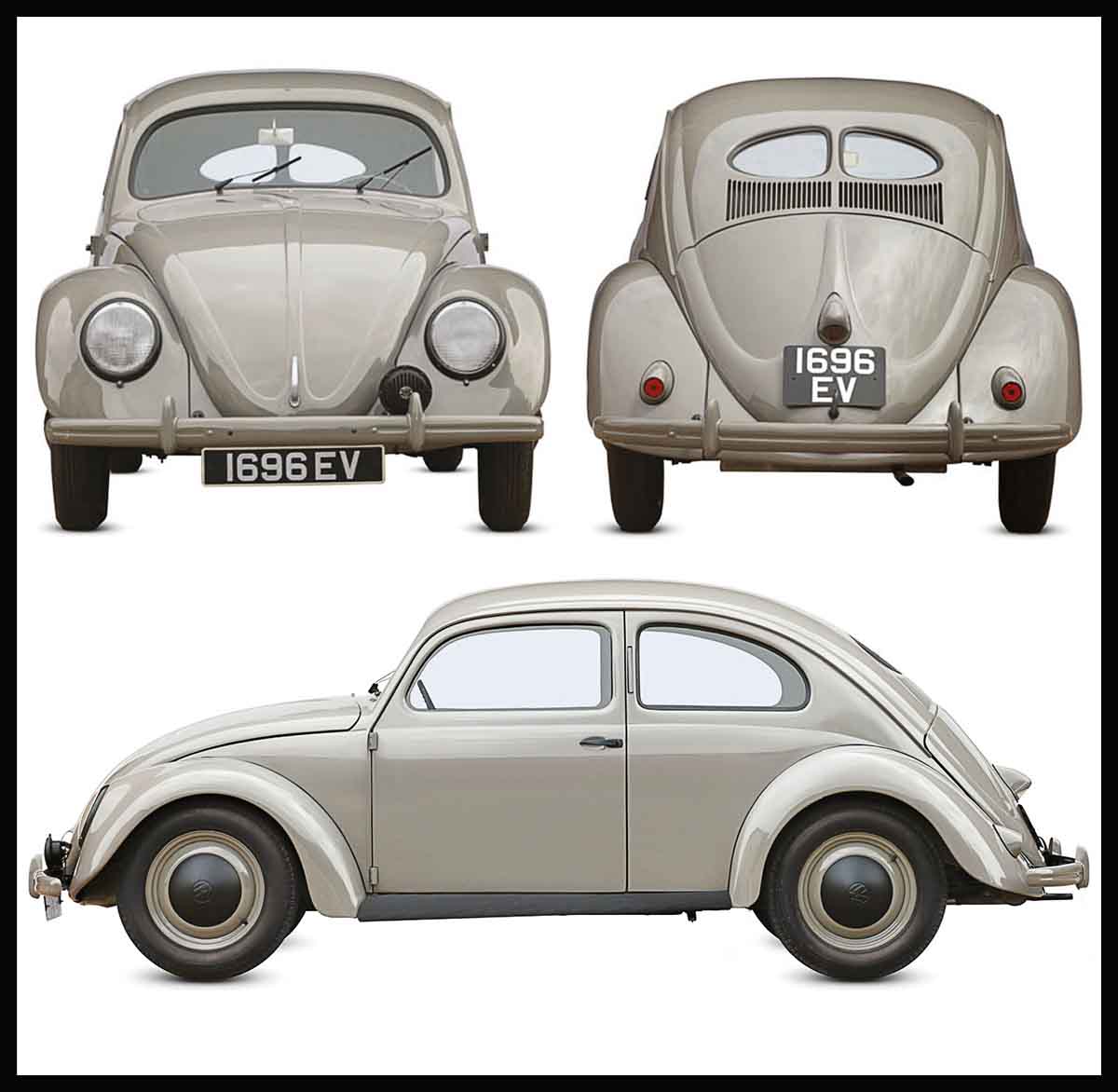
Small Family Cars
With money short and fuel still rationed in many countries, long after war was over, the focus was very much on small, economical cars. Most famous of them all was the Volkswagen, designed in the 1930s and put into full production by the British in 1945. It became a massive world-wide best-seller which remained in production for decades. But there were many more small cars, from across Europe and even in the relatively affluent US. Each one had its own approach to providing affordable family motoring, often based on novel engineering.
Volkswagen Beetle, 1945
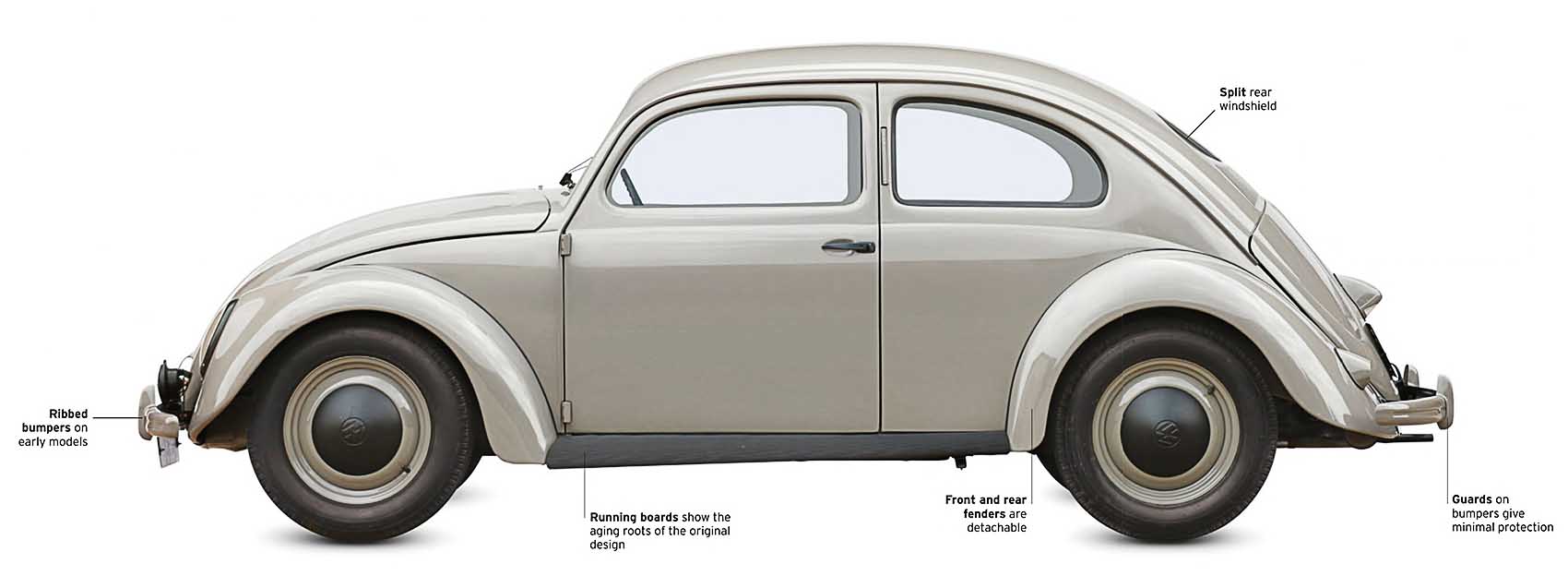
| Origin | Germany |
| Engine | 1,131 cc, flat-four |
| Top speed | 63 mph (101 km/h) |
Adolf Hitler commissioned engineer Ferdinand Porsche to design this low-cost vehicle for the German people. The rear-mounted engine was durable and air-cooled so it couldn’t boil over. Production began after World War II and continued, latterly in Mexico, until 2003. A remarkable 21 million were sold over seven decades.
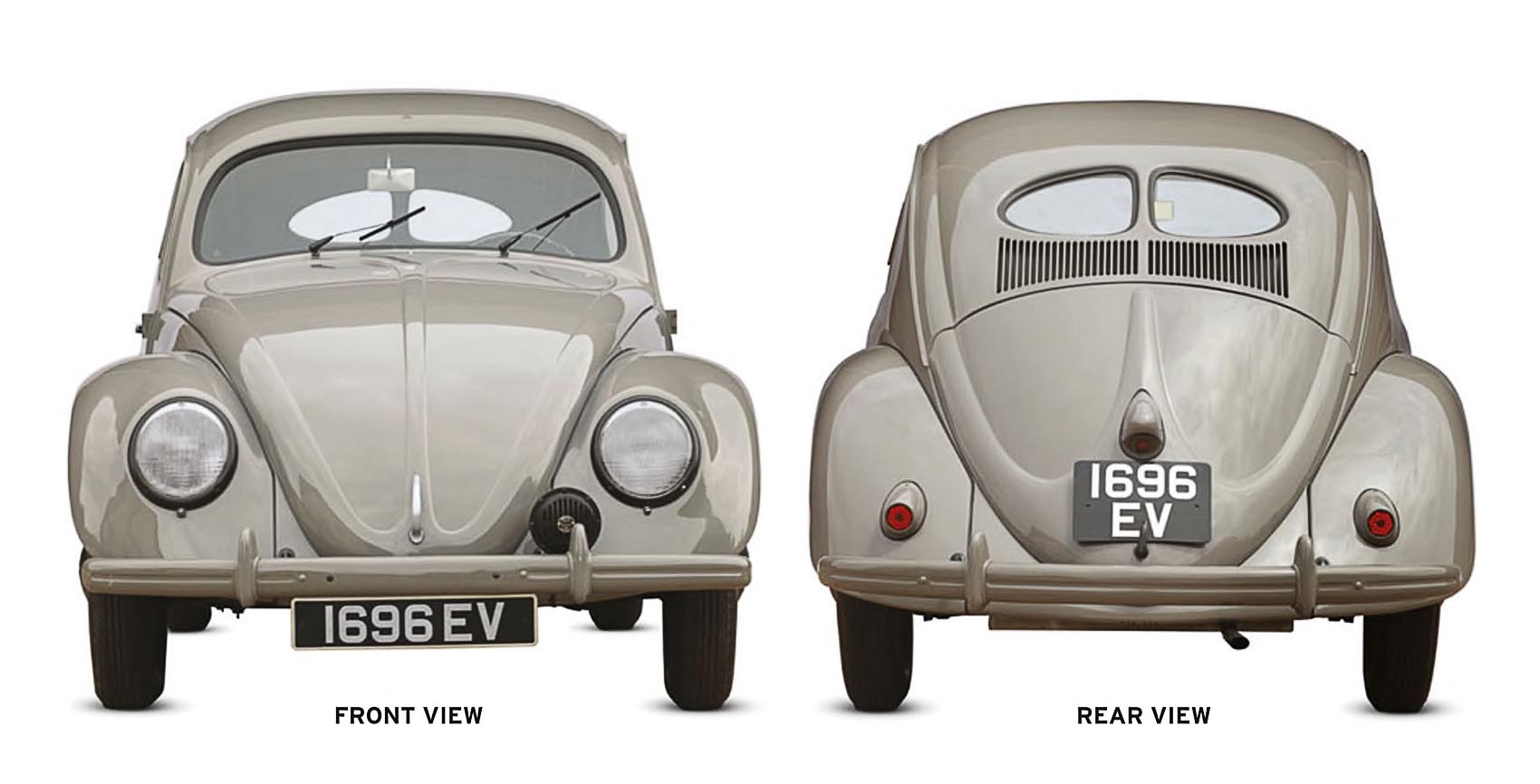
Comfort not speed
Despite its modest engine, good aerodynamics and pared-back, lightweight construction ensured the Beetle was a capable cruiser. All-round independent torsion-bar suspension also gave a comfortable ride and reasonable handling for the day.
Compact design
An advantage of positioning the engine at the back of the car was that it eliminated the need for a heavy rear axle, reducing weight, and helping to keep the design simple. Boot space was provided at the front of the car, but was limited.
Morris Eight Series E 1945
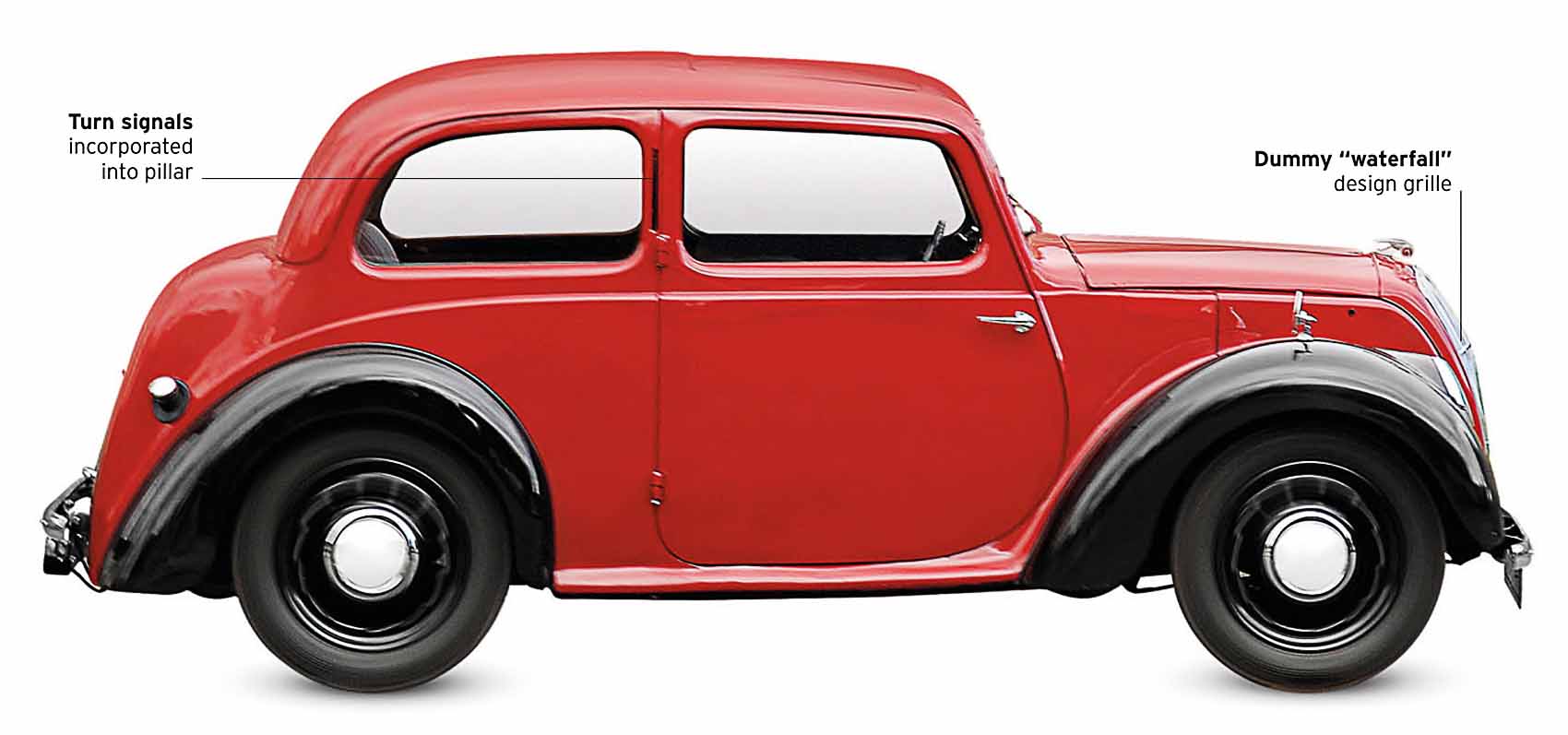
| Origin | UK |
| Engine | 918 cc, straight-four |
| Top speed | 58 mph (93 km/h) |
A revamp of the previous model, the Series E gained an upgraded engine, a new radiator grille, and headlamps. It also lost its running boards, giving it a modern enough appearance to continue in production until being replaced by the popular Morris Minor.
Ford Taunus G93A 1948
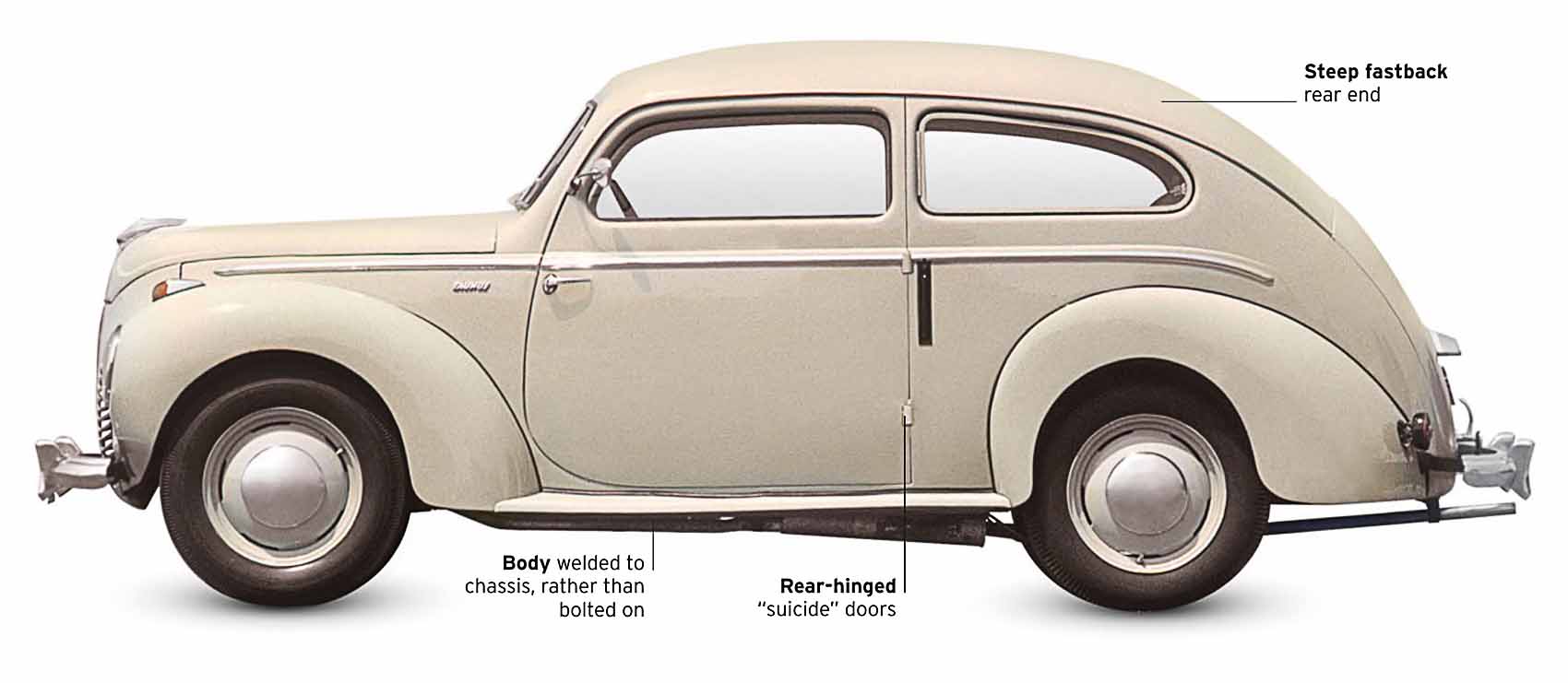
| Origin | Germany |
| Engine | 1,172 cc, straight-four |
| Top speed | 60 mph (96 km/h) |
Ford of Germany built this compact family car using the same engine, chassis, and suspension as Britain’s E93A Ford Prefect. They fitted their own bodies which looked more modern and were inspired by the American Lincoln Zephyr. The car reappeared after the war, in mildly modified form, as the G73A.
Crosley 1948
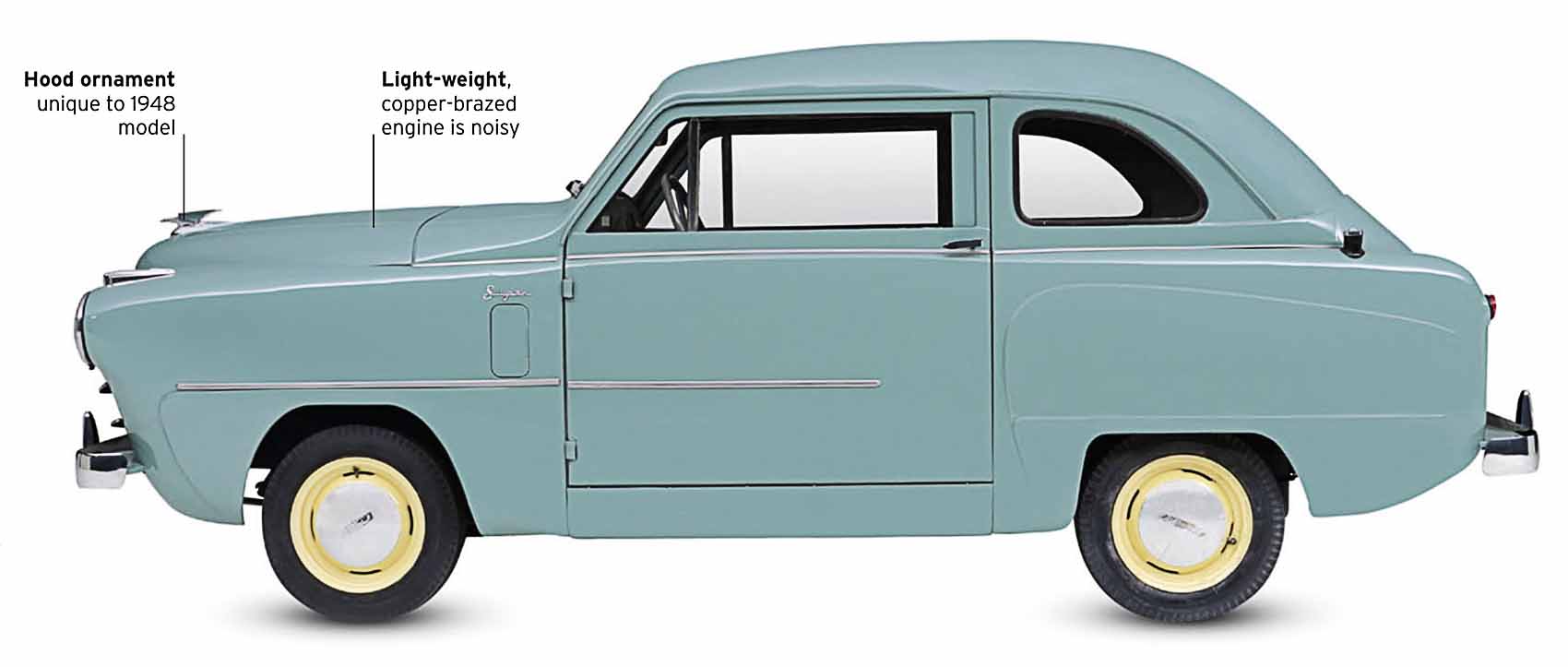
| Origin | USA |
| Engine | 721 cc, straight-four |
| Top speed | 70 mph (113 km/h) |
The slab-sided Crosley showed great promise with its unique “CoBra” engine, which had cast steel cylinders inside sheet-steel outer walls, and an overhead camshaft. When the engine proved unreliable, Crosley built a cast-iron version, but even then it failed to win over the US car-buying public.
Saab 92 1949
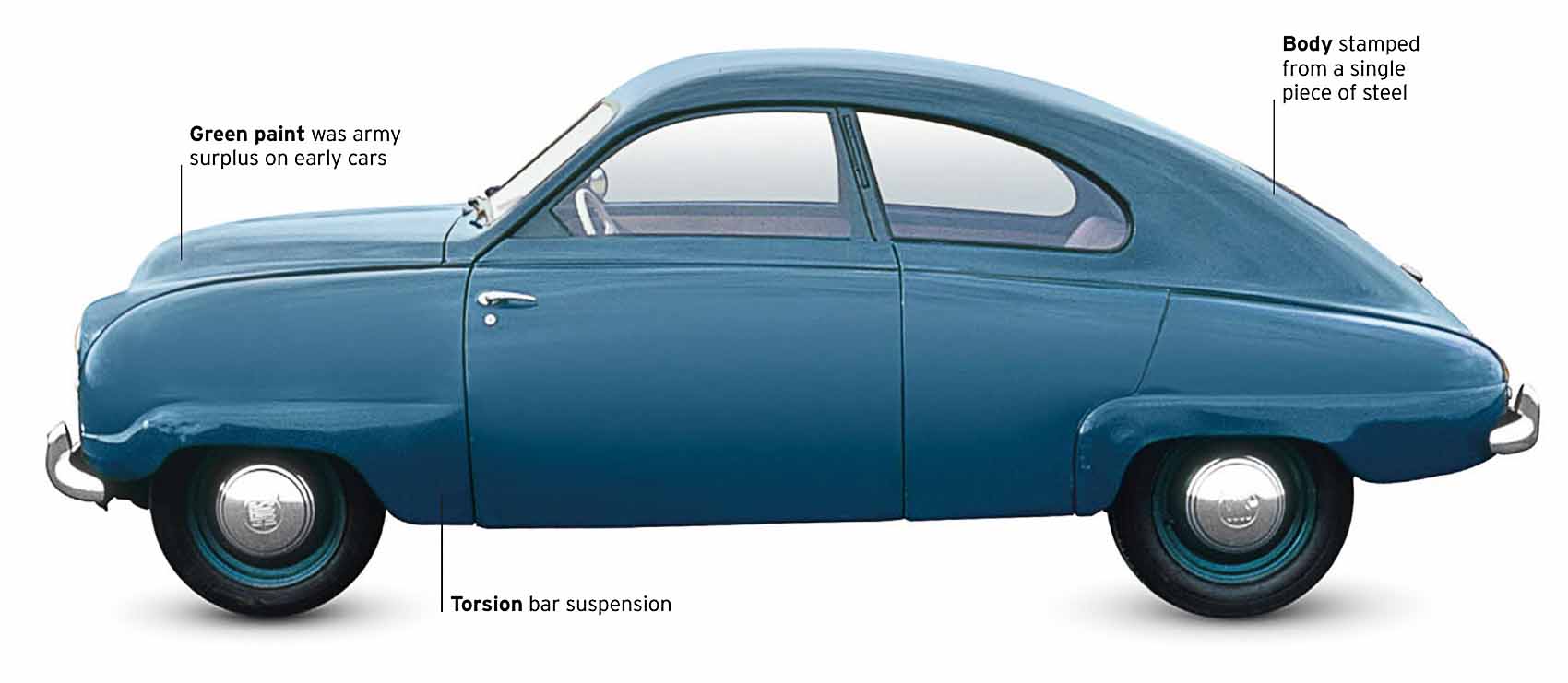
| Origin | Sweden |
| Engine | 764 cc, straight-two |
| Top speed | 65 mph (105 km/h) |
Aircraft maker Saab gave its 92 a radical low-drag body shape and a two-cylinder, two-stroke engine, with front-wheel drive, a 3-speed manual gearbox, and a free-wheel device. The 92 and its successors, the 93 and 96, proved to be successful rally cars.
It is a quote. The Classic Car Book – The Definitive Visual History 2016




